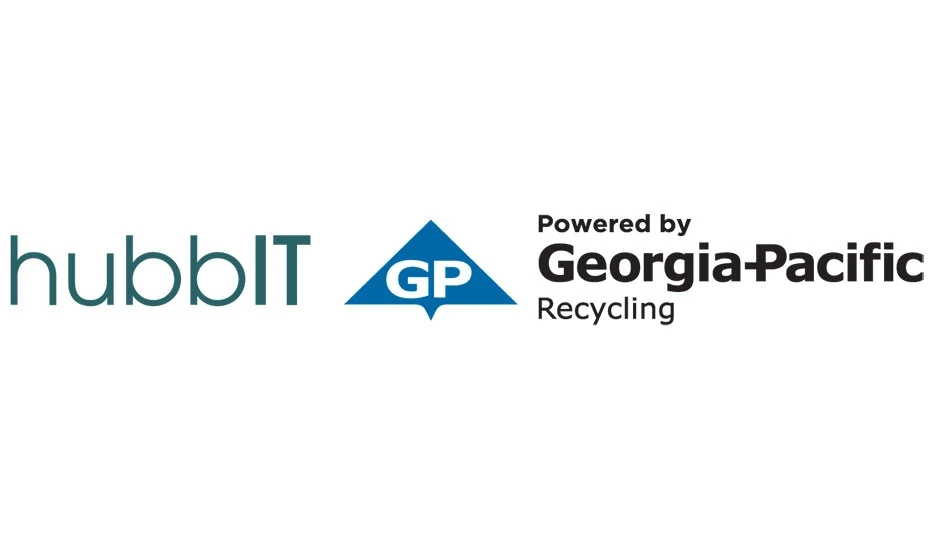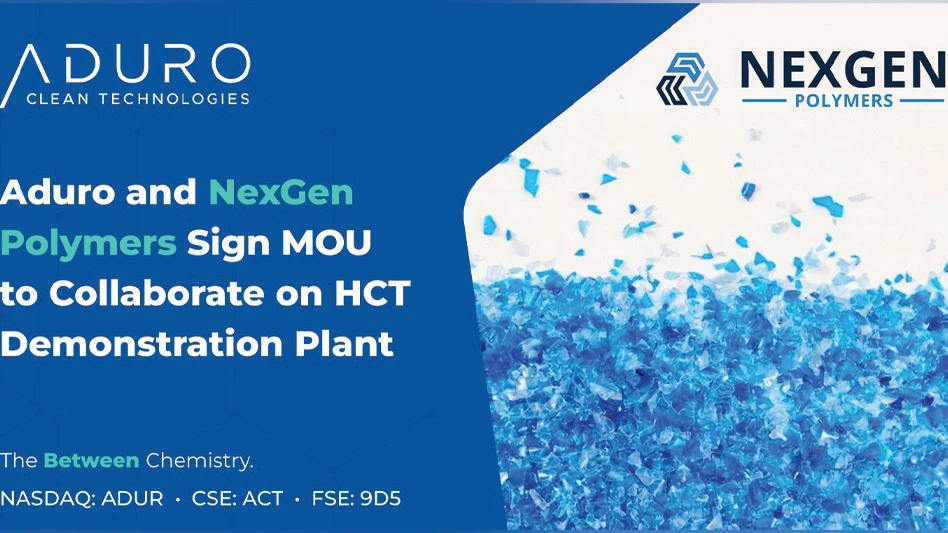[Editor’s Note: This feature is an excerpt from a presentation delivered by David Friedman at the 2004 Paper Recycling Conference & Trade Show, which was held in Atlanta in late June.]
It certainly is an exciting time for those of us in the recycling and the shredding industry, and especially for those of us in both.
Friedman Recycling Companies is a family owned and operated business started by my father in Arizona about 30 years ago. We service the entire Southwestern U.S. We operate two plants, one in Phoenix and one in Tucson. In addition to a full complement of plant processing capability, we also provide mill-direct brokerage as well as regional account management services throughout the western U.S. as well as for accounts as far east as Pennsylvania.
We have three operating divisions. The first one is Friedman Recycling, which provides comprehensive recycling services. In addition, we operate Security Data Destruction Co., which is our certified destruction company. And we also operate Friedman Waste Control Systems, which provides traditional solid waste hauling services.
SHREDDING EMERGES
Let’s take a look at the shredding industry. The industry has changed dramatically within the last five years. We’ve been in the shredding industry since 1987. In the "good old days," the biggest challenge we had was convincing our clients of the need to shred their confidential information.
That is no longer the case. The market has changed dramatically in that regard. Sensitivity to the importance of protecting confidential information has never been higher.
Why is that? It’s identity theft—it’s personal experiences. It is said that one in three Americans either have been or know someone who has been a victim of identity theft. This personal experience regarding the threat and the damage that can be incurred when your personal and confidential information gets into the hands of the unscrupulous has resulted in an explosion of federal and state laws that have really resulted in forcing businesses of all sizes and in all industries with the need to destroy a lot of the information coming out of their offices.
What’s the result? No surprise, the shredding industry has exploded. The empirical data in this regard is somewhat limited. Most of the data I’ll be sharing is from NAID—the National Association for Information Destruction. They recently completed a comprehensive study.
In 1999, NAID estimated the U.S. shred market to be approximately a $500 million [annual market]. Today, NAID estimates that same market to be at more than $1.5 billion.
The market is highly fragmented. The industry is dominated by small independent operators. Only one percent of U.S. shredding providers reported annual revenue of more than $50 million; three percent reported $10 to $50 million; two percent $5 to $10 million; 92 percent of the U.S. shredding service providers reported a gross annual revenue figure of less than $1.5 million.
Most shredding companies provide additional services in addition to shredding services. A third are in the records retention industry, providing storage of commercial records; a third are recycling companies; and a third are dedicated companies providing shredding services only. Most of those are operating on-site mobile trucks.
The new entrants to the industry continue to follow a similar pattern. Only about 1percent of the industry is comprised of non-profit organizations or organizations that run facilities that are conducive to destroying information, such as waste-to-energy plants or incinerators.
THE OFFICE SHREDDING TIDE
Office recycling programs are going extinct. They are being replaced by office shredding programs.
I am a firm believer that within the next five to 10 years, office recycling programs as we know them will no longer exist. They are being replaced by comprehensive office shredding programs designed to capture and shred all paper documents—and other media for that matter—that are generated inside the office environment.
We’re seeing this from personal experience with our largest corporate clients. More of our large corporate clients are coming to us and asking us to remove our recycling cabinets throughout their facilities and increase the network of shredding cabinets.
What we’re hearing is that the downstream contingent liability of one of their team members putting a piece of paper with confidential information in the wrong bin and having that piece of paper ultimately end up in the wrong hands is simply not worth it. The phrase we’re hearing over and over again is, "Just shred it all, because we don’t want to worry about it."
In addition to our own personal experiences, we’re seeing others within the industry—the large recycling companies—identifying similar trends and adjusting their strategies accordingly.
We’ve seen the large integrated recycling companies hiring sales representatives to specialize just in the shredding industry. We’ve seen them changing their marketing strategies. Their ads in the Yellow Pages under recycling are shrinking or disappearing altogether and they are popping up under paper shredding, and they’re enlarging their ads in that section of the market.
And we’ve seen even just subtle positioning, as in how they’re scripting the way they answer their phones. In the past where it used to be Acme Recycling Co., now it’s becoming Acme Recycling and Document Destruction Co.
As office recycling programs become office shredding programs, the office fiber will come to be controlled by the shredding companies and not the recycling companies. This is going to lead us to trend or reality number two, which is that the quality of office paper will deteriorate in the next five to 10 years.
Office paper will shift away from being a source product—a result of a process that is designed to go in and capture material for a mill-designated quality specification.
It will transform itself and become a byproduct of a process that is designed to protect the security and confidentiality of the generator. This is a process, by the way, in which little to no consideration is given to the quality considerations of the downstream utilizers [the mills].
In fact, in the latest NAID survey 64 percent of U.S. shredding service providers reported absolutely no sorting prior to shredding. Many of those with the "no sorting" policy use that as part of their marketing efforts—as some sort of tag line to differentiate themselves as a better or more secure operator than the recycling companies.
| Heading Downtown |
|
The 2005 Paper Recycling Conference & Trade Show will again take place in Atlanta, although this time the event is heading to the reviving downtown area of the city. The 2005 event is being held at the Hyatt Regency in downtown Atlanta June 26 to June 28 next year. The show, sponsored by the Recycling Today Media Group (publishers of SDB magazine) and the Paper Stock Industries Chapter of ISRI, offers paper recyclers, mill representatives and equipment and service providers the opportunity to interact in an affordable format. The event’s educational sessions cover a variety of topics while the trade show component features displays from shredder and baler manufacturers and other service providers. More information on the event will be posted at www. paperrecyclingconference.com as it becomes available. |
Of those that are sorting, 63 percent report sorting to a maximum of two grades. So even those shredding companies that are sorting are not doing a very in-depth or high-quality sort.
Sixty-eight percent of shredding companies in the U.S. reported less than 20 percent of their revenues are from scrap paper. Generally speaking, the value of recovered paper is not a high priority for shredding companies. That may sound like great news for paper brokers, but I believe it spells real trouble for the availability of quality office fiber in the near future. Only 4.4 percent of survey respondents are members of PSI (the Paper Stock Industries Chapter of the Institute of Scrap Recycling Industries Inc.).
RULES TO CONSIDER
As the shredding service providers expand with the market and then contract with the evolution of the market, the available fiber supply will continue to be sporadic over the next five to 10 years. What does all of this mean?
1) Mills must adapt their processing capabilities to accept shredded materials. While there are more mills taking shredded materials, there are still a number of mills that simply do not take shredded fiber. If they don’t, they rise dramatically limiting their available pool of suppliers in the near future.
2) Processors must adopt a shredding strategy. They must decide to get in the business themselves (and that’s no easy decision, because it’s a totally different industry than the recycling industry); ally themselves with a shredding provider; or prepare for the likelihood that they’ll no longer be participating in the office recycling market in the near future.
3) Office fiber will become more expensive. As shredding programs take off and as the fiber changes from a source product to a byproduct, it will become more expensive to motivate shredding providers to focus on their ability to process that material to the demanding quality specifications of the mills.
4) Mills must get involved and educate the marketplace regarding the value and the importance of office fiber as a raw material. The current situation today is reminiscent of the single-stream revolution of about eight to 10 years ago. Mills must involve themselves and educate the marketplace—both the generators and the service providers—to protect their best interests.
And finally, a strategy that is always tried and true in times of uncertainty and change: Find friends who you know and can trust, align your objectives and work together to protect each other and outperform your competition.
There is a storm a’ coming. I believe it will be increasingly more difficult to maintain a steady flow of quality office fiber. Mills must identify and support strategic partners who are capable of meeting the security demands of the marketplace, the quality demands of the mill consumers and who have the strength and the stability to ride out the gyrations of an evolving marketplace.
These are exciting times and there are a lot of changes going on. But with change comes opportunities. All of us at Friedman Recycling are looking forward to the challenges ahead. We’re looking forward to adapting our company to succeed, and I know that working together with some forethought and some cooperation, we can ensure that our industry continues to grow and to strengthen in the uncertain times ahead. n
The author is co-general manager of the Friedman Recycling Companies, Phoenix.
Get curated news on YOUR industry.
Enter your email to receive our newsletters.

Explore the November 2004 Issue
Check out more from this issue and find your next story to read.
Latest from Recycling Today
- ReMA opposes European efforts seeking export restrictions for recyclables
- Fresh Perspective: Raj Bagaria
- Saica announces plans for second US site
- Update: Novelis produces first aluminum coil made fully from recycled end-of-life automotive scrap
- Aimplas doubles online course offerings
- Radius to be acquired by Toyota subsidiary
- Algoma EAF to start in April
- Erema sees strong demand for high-volume PET systems






